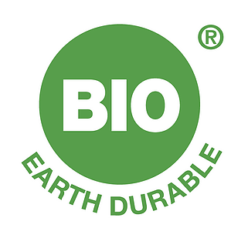PROCESSES FOR OBTAINING NATURAL INGREDIENTS
Regarding the obtaining of natural raw materials, simple mechanical or physical processes and extraction methods using natural solvents or of natural origin are accepted.
MANUFACTURING PROCESSES OF INGREDIENTS OF NATURAL ORIGIN AND SYNTHETIC INGREDIENTS
Regarding the chemical reactions necessary to obtain ingredients of natural origin and synthetic ingredients, simple chemical processes that respect the environment and result in the formation of the most biodegradable substances possible are authorized. The number of chemical reactions should be limited as much as possible.
Bio-Earth-Durable thus advocates a chemistry that respects mankind and the environment, “Green Chemistry”, which encourages the use of renewable agro-resources and the optimization of processes (waste recovery, energy savings. ‘energy…). “Green Chemistry” is therefore fully in line with a sustainable development approach. The chemical processes implemented in the manufacture of the products covered by this standard must take into account THE PRINCIPLES OF “GREEN CHEMISTRY”
The concept of “Green Chemistry” was defined in 1998 by American chemists Paul Anastas and John C. Warner, belonging to the EPA (Environmental Protection Agency). “Green Chemistry” is based on twelve principles, which aim to reduce or eliminate the use and formation of substances harmful to the environment or dangerous to human health, by favoring “clean” chemical processes, such as that is to say respectful of the environment.
- Prevent: limit pollution at the source rather than having to invest in sanitation or waste disposal.
- Save atoms: design the syntheses to maximize the incorporation of the materials used during the process into the final product.
- Design less harmful chemical syntheses: design processes using and creating substances that have the least impact on health and the environment.
- Designing safer chemicals: combining maximum efficiency and minimum toxicity.
- Designing safer chemicals: combining maximum efficiency and minimum toxicity.
- Improve energy efficiency: minimize the energy requirements of chemical processes by developing synthesis methods, for example at ambient temperature and pressure.
- Use renewable raw materials: favor renewable raw materials (non-fossil). This is the principle of Plant Chemistry.
- Reducing the quantity of by-products: favor synthetic routes which do not generate co-products, which can generate waste in particular.
- Use catalysis: promote the use of catalytic reagents that allow, at very low concentration, to accelerate chemical reactions and limit the number of steps in reaction processes.
- Design non-persistent substances: take into account, from their design, the mode of final degradation of chemicals.
- Analyze the fight against pollution in real time: develop analytical methodologies to ensure monitoring and control in real time and during production, with the aim of preventing pollution.
- Developing ever safer chemistry: choice of less dangerous substances to minimize the risk of chemical accidents, including releases, explosions and fires.
Authorized synthesis :
Natural neutralizing agents or those derived from green chemistry are recommended. All substances which exist in a natural state and which are reproduced identically by chemical synthesis are authorized, as their extraction from nature is difficult. Reagents essential for saponification reactions are authorized. These are also ingredients which, used in very small quantities, allow the regulation of the pH of the formulations. Reconstituted pigments and inert minerals (inorganic) are also authorized, in cases where the quantity available in the natural state is insufficient. It should be noted that synthetic ingredients authorized by the regulations are also authorized, the use of which is essential in the formulation.
PROHIBITED PROCEDURES (non-exhaustive list)
During the entire manufacturing process, the following processes are prohibited:
- Genetic technologies
- Dangerous active nanotechnologies
- Irradiation
Animal testing is prohibited by regulation. This ban covers both the finished product, the ingredients used in the composition and the entire process of development and manufacture of the cosmetic.
